Knee pain is one of the most common conditions for which people seek medical treatment. It includes pain around and behind the kneecap. People experience knee pain, especially during activities like stair climbing, squatting, running, and walking while carrying a heavy load. Knee pain can prevent you from taking part in your favorite activities and doing daily tasks. Without proper treatment, it can linger for years.
A variety of factors can cause knee pain, including:
- Weakness of the muscles that control the hip and knee.
- Knee stiffness and osteoarthritis of the knee.
- Incorrect positioning of the kneecap at rest or with movement.
- Flat feet.
- Improper exercise form.
A physical therapist can help you address your knee pain. After an evaluation, a physical therapist will tailor a comprehensive treatment program to your symptoms and work with you to address the factors causing your knee pain.
You do not need a physician referral* to see a physical therapist in the United States. Visit Find a PT to search for a physical therapist near you.
To find a physical therapist in your area, visit Find a PT.
Exercises You Can Try At Home
Research has shown that the exercises below can help to reduce pain and improve your ability to participate in the activities you love.
Consult your physical therapist or primary care provider before starting these exercises to make sure they are right for you. If you experience any symptoms such as pain, shortness of breath, or dizziness during these exercises, you should stop immediately. These exercises are provided for educational information only and are not a replacement for a thorough evaluation by a physician or physical therapist.
General exercise guidance. It is always best to seek guidance specific to you and your needs from your physical therapist as to the duration and frequency of exercises. However, general guidelines recommend the following:
- How many: one to three sets of each exercise with 10 to 15 repetitions for each set.
- How often: one to two times a day, for up to four days per week.
Complete each exercise listed below on both legs. Breathe comfortably while doing the exercises; do not hold your breath. If any of these exercises cause or increase your pain, stop immediately and consult with your physical therapist.
1. Clamshells
Lie on your side and support your neck using a pillow or a towel roll. Bend your knees toward your chest, keeping your back straight and your feet aligned with your body. Keep your feet together, lift your top knee toward the ceiling. Keep your hips straight, not allowing yourself to roll forward when you lift your leg. Pause briefly, then slowly lower your knee back down to the start position.
Optional: Place your back against a wall to keep your body aligned and to prevent from rolling forward.
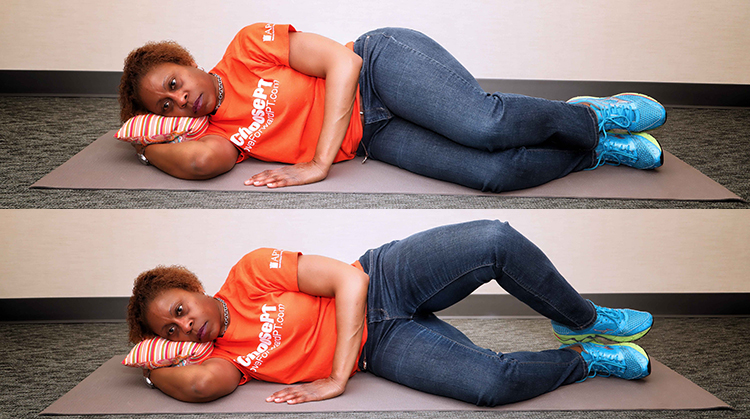
2. Bridging
Lie on your back and bend your knees so your feet are flat. Support your head with a pillow or towel roll. Keep your knees, feet, and hips in line with each other. Place your arms by your side, keeping them relaxed. Tighten the muscles of your buttocks and lift your hips toward the ceiling. Only raise your hips as high as you can without causing back pain or too much pressure. Pause, then slowly lower your hips down to the start position.
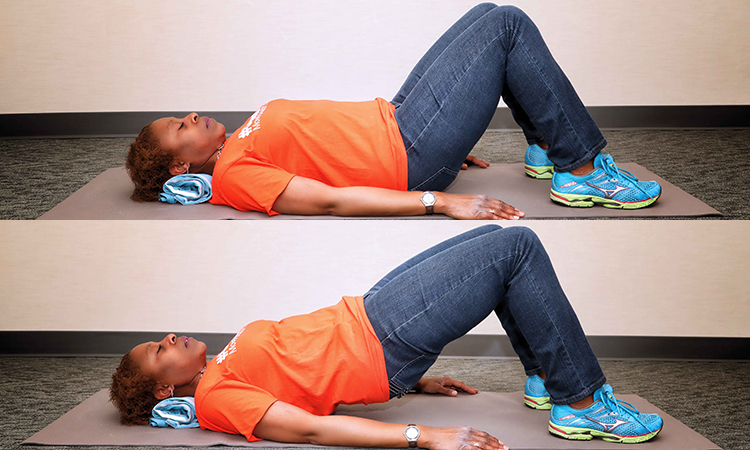
3. Hip Abduction
Lie on your side and bend your bottom knee to give you better balance. Support your head with a pillow or towel roll. Straighten the top knee by tightening the muscles on the top of your thigh. Flex your foot so your toes face forward, lift your leg toward the ceiling, lifting no higher than the line of your body. Pause, then slowly lower your leg back down to the start position.
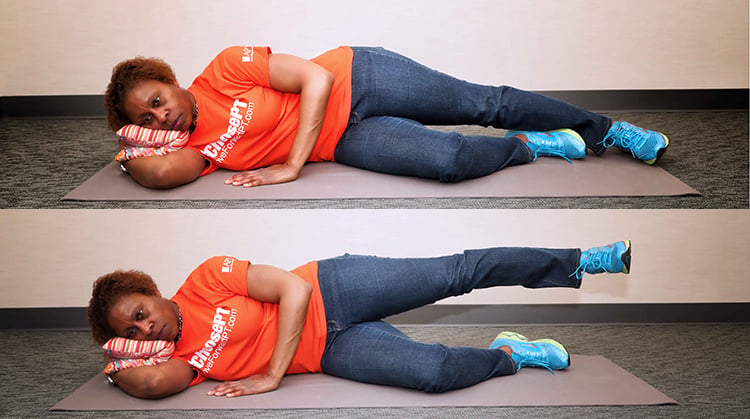
4. Straight Leg Raise
Lie on your back and support your neck with a pillow or neck roll. Bend one knee up so your foot is flat and your back is a neutral position (not arched). Keep your arms lying straight and in line with your shoulders. Straighten the other leg by tightening the muscles on the top of your thigh. Keeping your toes pointed up, lift your leg to the height of the bent knee. Pause, then slowly lower your leg back down to the start position.
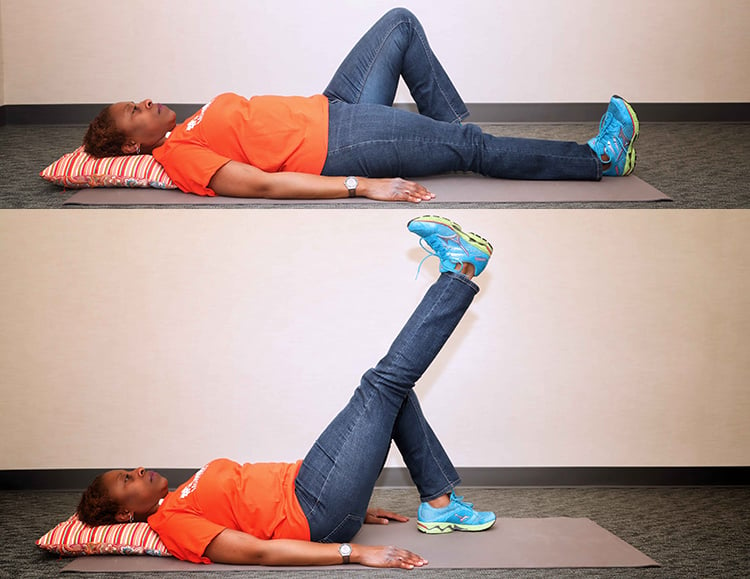
5. Short Arc Quad Raise
Lying on your back on the floor or mat, place a foam roller, bolster, or rolled 12- to 18-inch towel under one knee. Lift up your foot, keeping your knee on the roll. You should feel the top of your thigh tighten and the back of your knee stretch. Hold while breathing deeply and then lower. Do 10 repetitions on each leg, three sets per day.
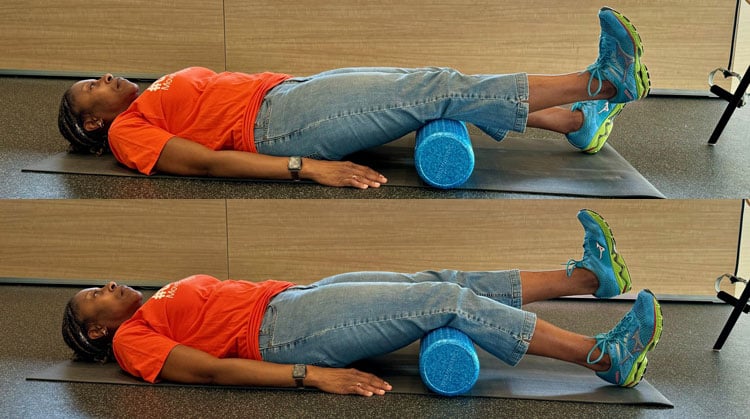
If knee pain symptoms don’t improve with these exercises after two to three weeks, a physical therapist can assess your symptoms and design a treatment program for your specific needs.
*All 50 states, the District of Columbia, and the U.S. Virgin Islands allow for direct access to physical therapy. Your health insurance policy, employer benefits package, or company policies may still require a referral. Some states may limit the type or duration of treatment without a referral.


